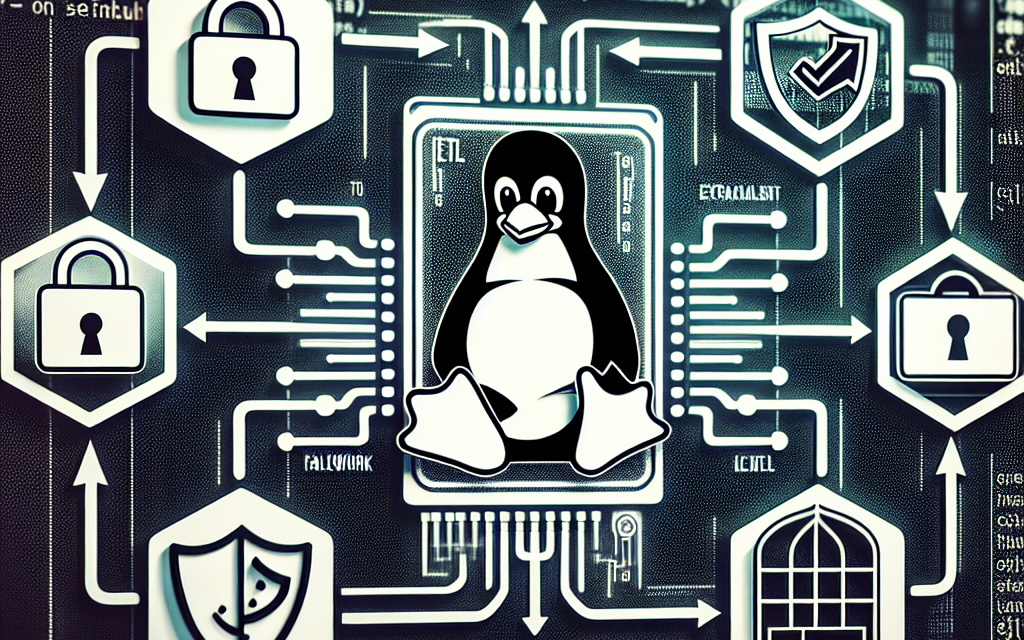In today’s data-driven world, the Extract, Transform, Load (ETL) process plays a critical role in ensuring data integrity and availability for analytics and business intelligence. However, with the increasing volume of data and its importance, ETL processes can also become a target for malicious activity. As data breaches can have severe consequences, it is essential to secure ETL processes on Linux servers. In this article, we will discuss best practices for securing ETL processes on Linux servers, helping you maintain the confidentiality, integrity, and availability of your data.
1. Use Strong User Authentication
Principle of Least Privilege: Ensure that the principle of least privilege is applied when configuring user accounts and permissions. Users and applications should only be assigned the permissions necessary to perform their tasks. Regularly review and update permissions.
SSH Key Authentication: For remote access to Linux servers running ETL processes, utilize SSH key authentication instead of password-based logins. Generate a public/private key pair and disable password authentication to enhance security.
2. Secure Data Transfer
Encryption in Transit: Use protocols like SFTP (Secure File Transfer Protocol) or HTTPS to encrypt data in transit. Encrypt sensitive information using industry-standard algorithms (e.g., AES-256) during the transfer process to mitigate the risk of interception.
Firewalls and VPNs: Implement firewalls to restrict access to your ETL servers and consider using a Virtual Private Network (VPN) to secure remote connections. This ensures that data is only accessed from trusted sources.
3. Data Encryption in Storage
Encrypt Sensitive Data: Encrypt sensitive data at rest using filesystem-level encryption (e.g., LUKS) or database encryption features. This adds an extra layer of security in case of a data breach.
Key Management: Use a centralized key management system to manage cryptographic keys securely. Ensure that keys are rotated regularly and never hard-coded into scripts or applications.
4. Monitor ETL Processes
Logging and Auditing: Implement comprehensive logging to monitor ETL processes for anomalies. Logs should capture details about data changes, user access, and system events. Regularly review logs to detect unauthorized access or abnormal activities.
Intrusion Detection Systems (IDS): Deploy an IDS to monitor system activity and detect potential threats in real time. This can help in identifying unauthorized access attempts or malicious behavior early.
5. Keep Software Updated
Regular Patching: Keep your Linux server and ETL tools updated with the latest security patches. Use a regular update schedule to ensure that all software, libraries, and dependencies are current and have no known vulnerabilities.
Automated Updates: Consider enabling automatic updates for security patches, but supplement this with manual audits to validate the updates and their impact on your systems.
6. Implement Risk Assessment
Conduct Regular Security Audits: Perform regular security assessments to identify vulnerabilities and assess the overall security posture of your ETL processes. This can include penetration testing, vulnerability scanning, and configuration reviews.
Data Classification: Classify your data based on sensitivity and apply appropriate security controls. High-risk data should have more stringent security measures compared to lower-risk data.
7. Secure ETL Configurations
Configuration Hardening: Harden the configuration of the ETL tools you use. Disable any unused features, services, or ports to reduce the attack surface.
Environment Separation: If feasible, segregate the ETL environment from other environments (e.g., development, production) to minimize the risks associated with accidental exposure or breaches.
8. Regular Backup and Disaster Recovery Planning
Automated Backups: Implement automated backup solutions for all critical data processed by the ETL. Regularly test backup and recovery procedures to ensure data can be restored quickly in the event of data loss or breach.
Disaster Recovery Plan: Develop a disaster recovery plan that includes procedures for addressing data breaches or system failures. Ensure that team members are trained and aware of their roles in these procedures.
Conclusion
Securing ETL processes on Linux servers is essential to protect sensitive data and comply with regulations. By following these best practices—implementing strong user authentication, securing data transfer, monitoring processes, and regularly auditing your security posture—you can significantly reduce the risk of data breaches and ensure the safe handling of your organization’s critical information. Remember that security is an ongoing process, requiring continuous evaluation and improvement to stay ahead of potential threats.
For more insights and discussions about ETL processes and data security, visit the WafaTech Blog for updated content and expert advice.





